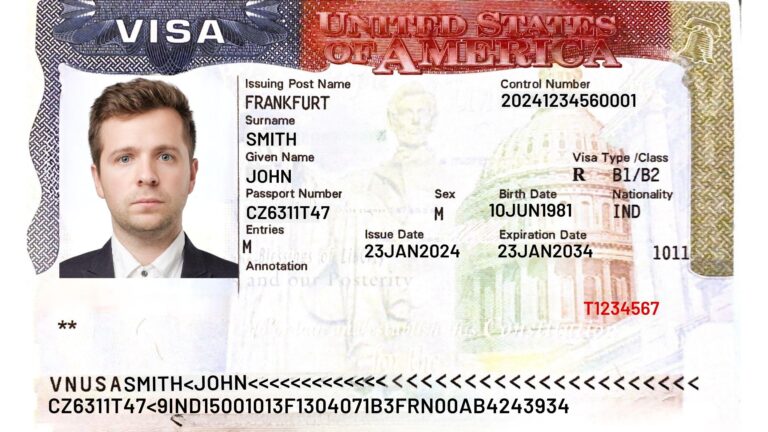The B-1/B-2 visitor visa remains one of the most commonly sought-after entry permits for travelers to the United States. Serving a dual purpose, the B-1 visa caters to business visitors, while the B-2 visa is designed for tourists and those seeking medical treatment. In this article, Boundless Immigration breaks down the essential details, application processes, eligibility criteria, and common misconceptions surrounding these visas, providing a comprehensive guide for prospective visitors aiming to navigate U.S. immigration requirements with confidence.
Understanding the Purpose and Eligibility Criteria for B-1 and B-2 Visas
The B-1 and B-2 visas serve distinct yet complementary purposes for individuals seeking temporary entry into the United States. The B-1 visa accommodates travelers entering for business-related activities such as attending conferences, negotiating contracts, or consulting with business associates. Meanwhile, the B-2 visa caters primarily to those visiting for tourism, vacations, or medical treatment. Both visas are non-immigrant and intended for short stays, with applicants needing to demonstrate strong ties to their home country and a clear plan outlining their visit.
Eligibility for these visas hinges on several key factors. Applicants must provide proof of sufficient financial resources to cover their stay and show intent to depart the U.S. after a temporary visit. Below is a summary of the main eligibility criteria:
| Criteria | B-1 Visa | B-2 Visa |
|---|---|---|
| Purpose of Visit | Business meetings, conferences, negotiations | Tourism, vacation, medical treatment |
| Duration | Usually up to 6 months | Typically up to 6 months |
| Proof Required | Business letters, invitation letters | Travel itinerary, medical documents |
| Intent | Temporary business activity | Temporary leisure or medical stay |
Key Documents and Application Process Demystified
Understanding the essential paperwork can significantly streamline your B-1/B-2 visa application. First and foremost, applicants need a valid passport that remains effective for at least six months beyond their intended stay in the U.S. Equally crucial is the DS-160 nonimmigrant visa application form, a detailed questionnaire submitted online that captures personal, travel, and security information. Alongside these, applicants must obtain a suitable photograph conforming to U.S. visa specifications, pay the non-refundable application fee, and schedule a visa interview at the nearest U.S. embassy or consulate. Supplementary documents, such as evidence of ties to your home country and details justifying the trip’s purpose, must be ready for review during your appointment.
To put it into perspective, the table below summarizes the core requirements:
| Document | Purpose | Tips |
|---|---|---|
| Valid Passport | Identity verification & travel eligibility | Check expiration date carefully |
| DS-160 Form | Visa application details | Fill accurately; save confirmation page |
| Photograph | Photo identification on visa | Use recent, compliant photo |
| Application Fee Receipt | Proof of payment | Keep receipt for interview |
| Supporting Documents | Proof of ties and trip justification | Organize in advance; anticipate questions |
Navigating Common Challenges and Avoiding Application Pitfalls
Applicants often stumble upon common issues such as incomplete forms, insufficient documentation, or unclear intentions for their trip, which can lead to delays or outright denials. One critical element to remember is demonstrating strong ties to your home country‚ÄĒwhether through employment, family, or property ownership‚ÄĒto convince visa officers that your stay in the U.S. is genuinely temporary. Failing to clearly articulate your purpose or overstating your plans may raise red flags about your intentions.
- Ensure all forms are filled out accurately and double-check for any omissions.
- Prepare a detailed itinerary that highlights the scope and expected duration of your visit.
- Compile strong evidence of ties to your home country, such as employment letters, proof of property, or family commitments.
- Consult with immigration professionals if you have unusual circumstances or past visa refusals.
| Common Mistakes | Impact | Best Practice |
|---|---|---|
| Incomplete Application | Processing Delays or Denial | Thoroughly Review All Entries |
| Weak Ties to Home Country | Suspicion of Immigrant Intent | Provide Concrete Supporting Documents |
| Lack of Clear Purpose | Visa Officer Doubts | Submit Detailed Trip Itinerary |
Expert Tips for Maximizing Your Visa Approval Chances
When preparing your B-1/B-2 visa application, presentation is everything. Ensure all documents are up-to-date, accurately filled, and neatly organized. Consular officers appreciate clarity and completeness, so double-check financial statements, employment letters, and travel itineraries. Highlighting strong ties to your home country‚ÄĒsuch as stable employment or family commitments‚ÄĒcan significantly outweigh generic travel plans. Avoid common pitfalls like overstaying past visas or inconsistent information across documents, which can cast doubt on your intentions.
Understanding the nuances of your interview can boost your confidence and credibility. Here’s a concise checklist to help you prepare:
- Dress professionally to make a positive first impression.
- Practice concise answers emphasizing purpose and ties to your home country.
- Bring all original documents even if you’ve submitted copies online.
- Be honest and consistent to build trust with the visa officer.
| Tip | Why It Matters |
|---|---|
| Strong home ties | Demonstrates non-immigrant intent |
| Clear travel purpose | Shows legitimate reasons for visit |
| Timely application | Avoids rushed or incomplete submissions |
| Calm, confident interview | Leaves a positive impression |
In Summary
In conclusion, understanding the nuances of the B-1/B-2 visitor visa is essential for travelers seeking temporary entry to the United States for business or tourism purposes. As Boundless Immigration highlights, navigating the application process can be complex, but informed applicants stand a better chance of success. Staying updated on the latest requirements and preparing thoroughly ensures a smoother visa experience. For those planning a visit, keeping these key points in mind can help turn the journey into an opportunity rather than a hurdle.




